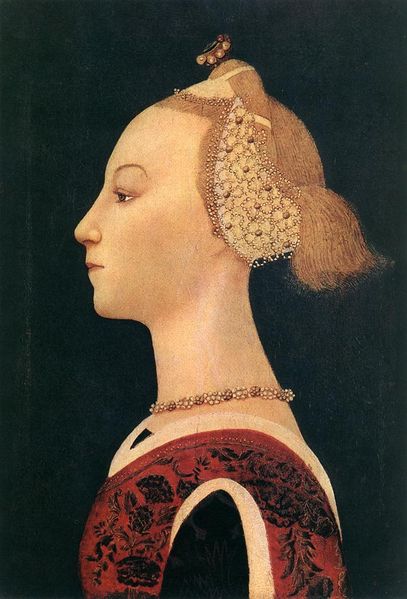Paolo Uccello (1397-1475)
Get a Paolo Uccello (1397-1475) Certificate of Authenticity for your painting (COA) for your Paolo Uccello (1397-1475) drawing.
For all your Paolo Uccello (1397-1475) artworks you need a Certificate of Authenticity (COA) in order to sell, to insure or to donate for a tax deduction.
Getting a Paolo Uccello (1397-1475) Certificate of Authenticity (COA) is easy. Just send us photos and dimensions and tell us what you know about the origin or history of your Paolo Uccello (1397-1475) painting or drawing.
If you want to sell your Paolo Uccello (1397-1475) painting or drawing use our selling services. We offer Paolo Uccello (1397-1475) selling help, selling advice, private treaty sales and full brokerage.
We have been authenticating Paolo Uccello (1397-1475) and issuing certificates of authenticity since 2002. We are recognized Paolo Uccello (1397-1475) experts and Paolo Uccello (1397-1475) certified appraisers. We issue COAs and appraisals for all Paolo Uccello (1397-1475) artworks.
Our Paolo Uccello (1397-1475) paintings and drawings authentications are accepted and respected worldwide.
Each COA is backed by in-depth research and analysis authentication reports.
The Paolo Uccello (1397-1475) certificates of authenticity we issue are based on solid, reliable and fully referenced art investigations, authentication research, analytical work and forensic studies.
We are available to examine your Paolo Uccello (1397-1475) painting or drawing anywhere in the world.
You will generally receive your certificates of authenticity and authentication report within two weeks. Some complicated cases with difficult to research Paolo Uccello (1397-1475) paintings or drawings take longer.
Our clients include Paolo Uccello (1397-1475) collectors, investors, tax authorities, insurance adjusters, appraisers, valuers, auctioneers, Federal agencies and many law firms.
We perform Paolo Uccello art authentication, appraisal, certificates of authenticity (COA), analysis, research, scientific tests, full art authentications. We will help you sell your Paolo Uccello or we will sell it for you.

Paolo Uccello, born Paolo di Dono, was an Italian painter who was notable for his pioneering work on visual perspective in art. Giorgio Vasari in his book Lives of the Artist wrote that Uccello was obsessed by his interest in perspective and would stay up all night in his study trying to grasp the exact vanishing point. He used perspective in order to create a feeling of depth in his paintings and not, as his contemporaries, to narrate different or succeeding stories.
His best known works are the three paintings representing the battle of San Romano (for a long time these were wrongly entitled the “Battle of Sant’ Egidio of 1416”).
Paolo worked in the Late Gothic tradition, and emphasized color and pageantry rather than the Classical realism that other artists were pioneering. His style is best described as idiosyncratic, and he left no school of followers. He had some influence on twentieth century art and literary criticism.
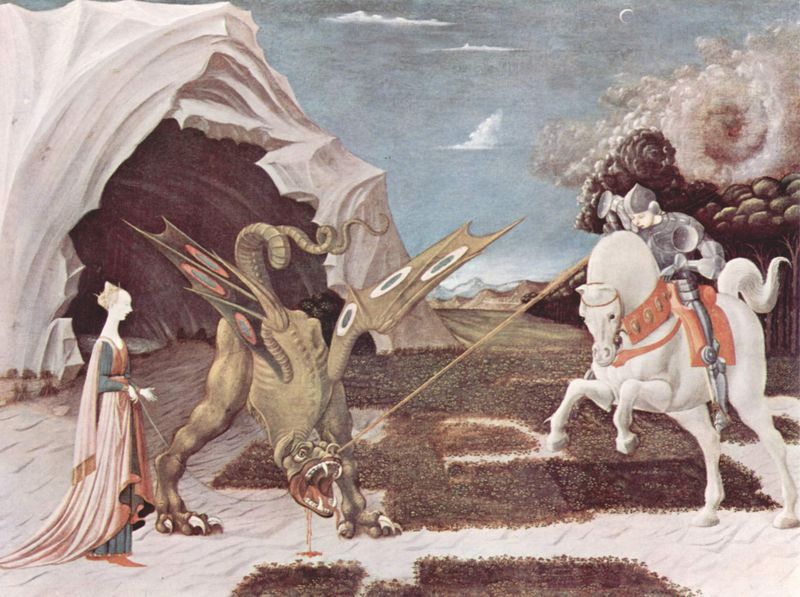
The sources for Paolo Uccello’s life are few: Giorgio Vasari’s biography, written 75 years after Paolo’s death, and a few contemporary official documents. Uccello was born in Florence in 1397. His nickname Uccello came from his fondness for painting birds. His father, Dono di Paolo, was a barber-surgeon from Pratovecchio near Arezzo, his mother’s name was Antonia.
At the age of ten, Paolo was apprenticed to the famous sculptor Lorenzo Ghiberti; Ghiberti’s workshop was the premier centre for Florentine art at the time. Ghiberti’s late-Gothic, narrative style and sculptural composition greatly influenced Paolo. It was also around this time that Paolo began his lifelong friendship with Donatello. In 1414 Uccello was admitted to the painters’ guild Compagnia di San Lucca and just one year later, in 1415, he joined the official painter’s guild of Florence Arte dei Medici e degli Speziali.
According to Vasari, Paolo’s first painting was a Saint Anthony between the saints Cosmas and Damianus, a commission for the hospital of Lelmo. Next he painted two figures in the convent of Annalena. Shortly afterwards he painted three frescoes with scenes from the life of Saint Francis above the left door of the Santa Trinita church. For the Santa Maria Maggiore church he painted a fresco of the Annunciation. In this fresco, he painted a large building with columns in perspective. Vasari writes that people thought this was a great and beautiful achievement.
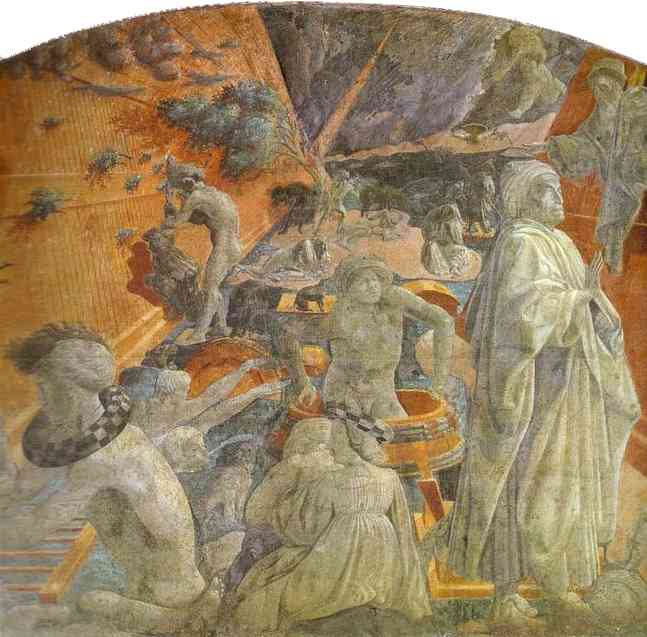
Paolo painted the Lives of the Church Fathers in the cloisters of the church of San Miniato, on a hill overlooking Florence. For this fresco he used unusual colors (blue pastures, red bricks and different colors for the buildings) as a protest against his monotonous meals served by the abbot: cheese pies and cheese soup. In the end Paolo felt so miserable that he ran away. He only finished the job after the abbot promised to serve him normal meals.
Paolo was asked to paint a number of distempered scenes of animals for the house of the Medici. His depiction of a fierce lion fighting with a venom-spouting snake was especially appreciated by Vasari. Ucello loved to paint animals and he kept a large number of pictures of all kinds of animals, especially birds, at home. Because he was so fond of birds, he was aptly nicknamed Paolo Uccelli (Paul of the birds).
By 1424 Paolo was earning his own living as a painter. In that year he painted episodes of the Creation and expulsion for the Green Cloister (Chiostro Verde) of Santa Maria Novella in Florence (now badly damaged), proving his artistic maturity. Again, he was able to paint in a lively manner a large number of animals. As he succeeded in painting trees in their natural colors, in contrast with many of his predecessors, he began to acquire a reputation for painting landscapes. He continued with scenes from the Deluge, the story of Noah’s Ark, Noah’s sacrifice and Noah’s drunkenness. These scenes brought him great fame in Florence. Around this time he was taught geometry by Manetti.
In 1425 Uccello travelled to Venice, where he worked on the mosaics for the façade of San Marco (all these works have been lost). Some suggest he visited Rome with his friend Donatello before returning to Florence in 1431. He also painted some frescoes in the Prato Cathedral and Bologna.
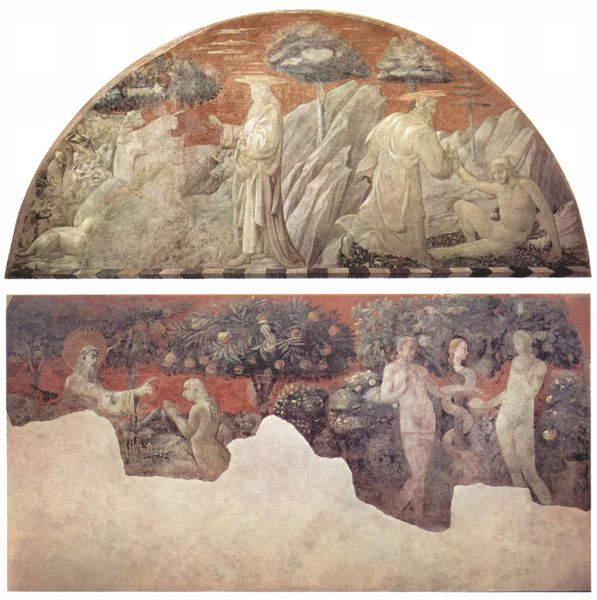
In 1432 the Office of Works asked the Florentine ambassador in Venice to enquire after Uccello’s reputation as an artist. Uccello remained in Florence for most of the rest of his life, executing works for various churches and patrons, most notably the Duomo. In 1436 he was given the commission for the monochromatic fresco of Sir John Hawkwood. In this equestrian monument he showed his keen interest in perspective. The condottiere and his horse are presented as if the fresco was a sculpture, seen from below.
If, as is widely thought, he is the author of the frescoes Stories of the Virgin and Story of Saint Stephen in the Cappella dell’Assunta, Florence, then he would have visited nearby Prato sometime between 1435 and 1440.
In 1443 He painted the figures on the clock of the Duomo. In the same year and in 1444 he designed a few stained glass windows for the same church. In 1444 he is also at work in Padua.
In 1445 he traveled to Padua at Donatello’s invitation. Back in Florence in 1446, he painted the Green Stations of the Cross, again for the cloister of the church Santa Maria Novella. Around 1447-1454 he painted Scenes of Monastic Life for the church San Miniato al Monte, Florence.
Around 1450-1456 he painted his three most famous paintings The Battle of San Romano, the victory of the Florentine army over the Sienese in 1432, for the Palazzo Medici in Florence. The daring perspective form gives an appearance of depth to the battle scene.
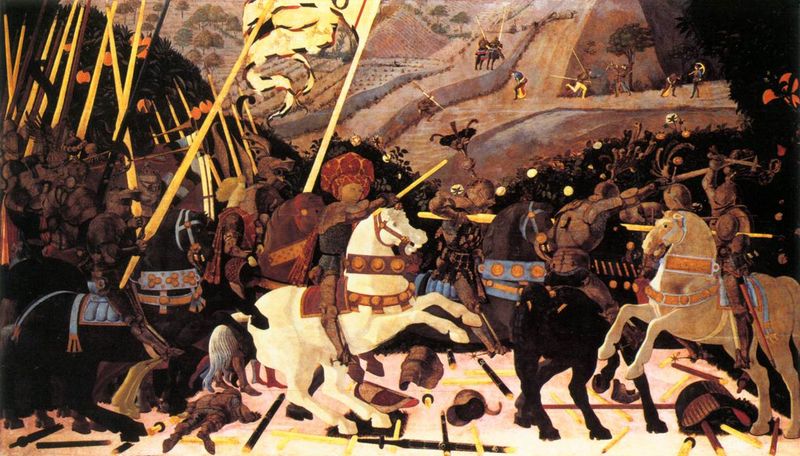
Uccello was married to Tomassa Malifici by 1453, because in that year Donato (named after Donatello) was born, and in 1456 his wife gave birth to Antonia.
In 1465 Uccello was in Urbino with his son Donato, where he was engaged until 1469 working for the Confraternity of Corpus Domini, a brotherhood of laymen. He painted a predella with the Miracle of the Profaned Host part of a monumental altarpiece. The main panel was finished by Justus van Ghent with a scene from the “Communion of the Apostles” in 1474. Ucello’s predella consisted of six scenes (with meticulous naturalistic interiors) related to the anti-Semitic legend of the “Miracle of the Profaned Host” that had taken place in Paris in 1290. In one of them he depicted Jews burning at the stake the blasphemous act of desecrating the Holy Host. This was an effort by Duke Frederick of Montefeltro of Urbino to vilify the Jews (while tolerating Jewish activity in Urbino). Not all these scenes are unanimously attributed to Paolo Uccello.
In his Florentine tax return of August 1469 he declared: “I find myself old and ailing, my wife is ill, and I can no longer work.” In his last years, he was a lonesome, forgotten man, afraid of hardship in life. His last known work is The Hunt, c. 1470.
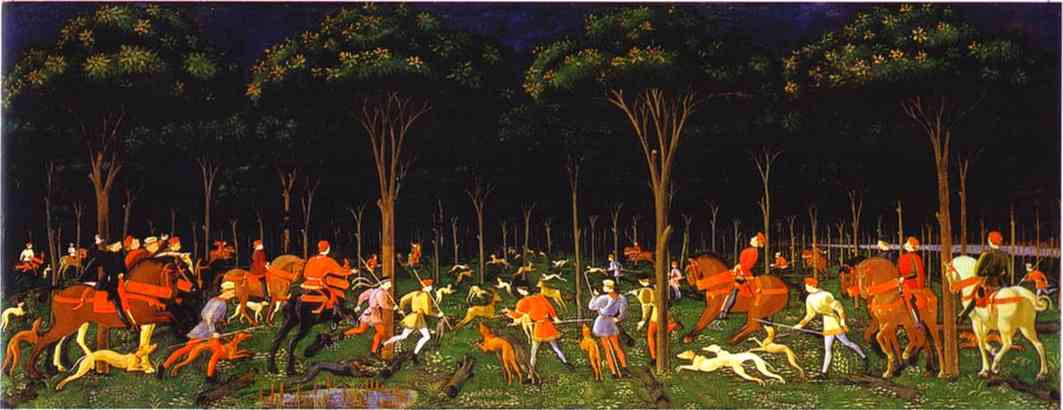
He made his testament on 11 November 1475 and died shortly afterwards at the age of 78 on 10 December 1475 at the hospital of Florence. He was buried in his father’s tomb in the Florentine church of Santo Spirito.
With his precise, analytical mind he tried to apply a scientific method to depict objects in three-dimensional space. In particular, some of his studies of the perspective foreshortening of the torus are preserved, and he realized the thus acquired insights in his paintings in form of the mazzocchio. The perspective in his paintings has influenced famous painters such as Piero della Francesca, Albrecht Dürer and Leonardo da Vinci, to name a few.
